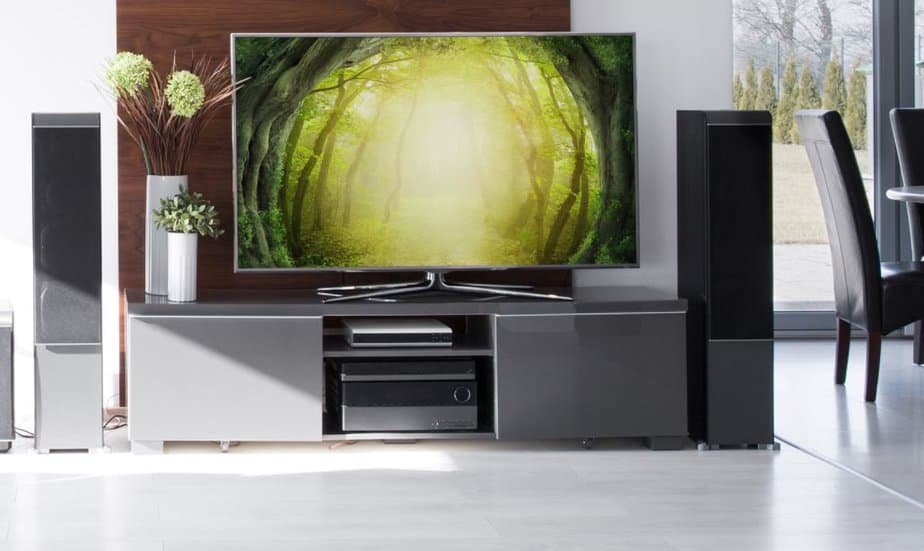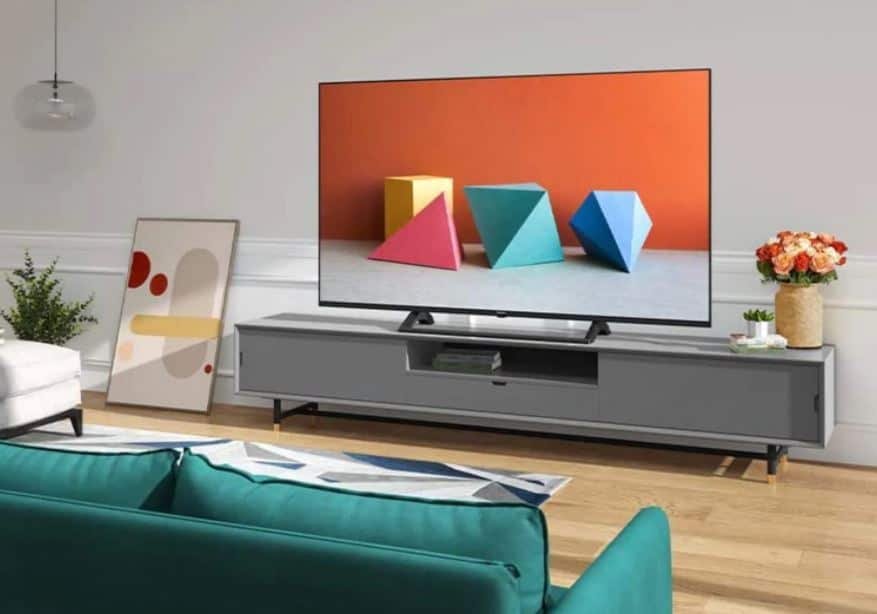HDR TV is a technology that allows you to optimize the image quality through better management of brightness inside the video sequences. Devices with integrated HDR offer a high dynamic range. They are able to ensure an excellent visual impact, with extremely detailed images and always perfect lighting in any visual context. Let’s find out what you need to know about this system and the best HDR TVs on the market.
HDR TV – what exactly is it
HDR is an acronym for High Dynamic Range or wide dynamic range. This technology is often combined with Ultra HD 4K screens. Here, the resolution quality guarantees support for high definition through a greater number of pixels. With HDR, it is possible to increase the specific quality of each individual pixel. This system can be applied to any type of screen. Its purpose is to optimize the dynamic visual quality of the pixels present.
Without a doubt, a 4K HDR TV offers a better overall viewing experience than an HD or Full HD TV with HDR support. However, for the same resolution, a device with HDR certainly offers superior vision compared to a device without this technology. An HDR television increases the quality when watching video content, as it allows each pixel to express all available color variations in high or low light.
TVs with HDR can show an amount of shades of brightness and colors closer to that perceivable by the human eye. In a conventional screen, this color range is more limited. This allows you to obtain, for example, darker blacks and brighter whites, with the possibility of fully exploiting the visual potential of the screen. A TV with HDR, therefore, offers a greater dynamic range and a higher contrast ratio, using all available brightness levels.
How HDR works in televisions
HDR technology inside televisions tries to replicate the natural vision we have when we look at the world with our eyes. In real life, we can observe what surrounds us, capturing every chromatic and luminous nuance of the scenario present in front of us. We can notice unique and almost imperceptible details within a real scene, for example, by distinguishing the slightest differences in light caused by the reflections of the setting sun or the light effects caused by the shadows.
With HDR, the screens of modern televisions try to bring conventional video playback closer to the real vision of our eyes, increasing the dynamic range of light that you can manage through the display. A TV with HDR can differentiate even the smallest shades of shadows and highlights, creating particularly realistic images. A normal TV can reproduce just a small part of the variations in light and color. This fails to convey the same sensations that one feels when looking at the real image.
HDR TVs take a step forward compared to traditional high-definition televisions. This brings the real viewing experience closer to the artificial one. To do this, they take advantage of a series of technologies with 10 or 12-bit panels, new optimized and standard LED systems such as Dolby Vision. Currently, the range of colors that can be reproduced with an HDR TV can range from 50 to over 75% of the colors perceived by the human eye, while a normal TV without HDR barely reaches around 35%.
The standards of HDR TVs
Several standards are used to implement HDR technology in televisions, starting with the basic HDR10. All HDR TVs are compatible with this open source protocol. It is also used in Ultra HD Blu-ray content and console games such as PS4 and Xbox One. The evolution is the HDR10 + standard, a system that allows you to manage HDR in a personalized way by adapting it to measure based on each type of content being played, used for example, on Samsung smart TVs and the contents of the Amazon Prime Video platform.
The wide dynamic range is also proposed through the Dolby Vision protocol, the proprietary version alternative to the HDR10 and HDR10 + open source project. This standard supports the most advanced 12-bit panels with a maximum brightness of up to 10,000 nits. A system compatible with several Sony and LG TVs. Finally, we must also mention the HLG (Hybrid Log Gamma) technology. It is an HDR system used for television broadcasts, integrating traditional dynamic ranges with those of the HDR type.
Why buy an HDR TV?
HDR televisions can offer a high dynamic range, managing light and colors more efficiently. These TVs offer images more similar to the real ones perceived by sight, with a high depth and contrast, bringing the video experience closer to the visual one of real life. As for the best standards, they are undoubtedly HDR10 + and Dolby Vision, or HLG for television broadcasts in the broadcast sector, especially when you combine them with screens with 4K Ultra HD resolution.
The best TVs with HDR
Nowadays, you can find numerous TVs with a wide dynamic range. This may also include OLED 4K HDR TVs, or the cheaper 4K Ultra HD LED TVs with HDR. Here are the models to consider to take advantage of hyper-realistic images, with a selection of the best HDR TVs for each price range.
Hisense 43AE7210F
A TV with a high dynamic range is the Hisense 43AE7210F. A 4K Ultra HD resolution LED TV with a 43-inch screen. The device is compatible with HDR and HDR10 +, supports the Dolby DTS standard, and comes with Alexa for controlling smart functions through voice commands. There is the double tuner for digital terrestrial and satellite DVB-T2/S2 HEVC Main 10, the Vidaa u4.0 operating system, the Wi-Fi module, Bluetooth connectivity, and the preparation for the VESA 200 × wall attachment. 200 mm.
Main features
- 43-inch LED TV
- HDR, HDR10+
- UHD 4K resolution
- Vidaa u4.0
- Wi-Fi, Bluetooth, USB, HDMI, Ethernet
- DVB-T2 HEVC Main 10, DVB-S2
LG 43UP75006LF
One of the best quality-price LED HDR TVs is the LG 43UP75006LF model, a 43-inch TV with 4K Ultra HD resolution. The screen supports HDR10 + and HLG standards, has a powerful 4K quadcore processor, and a Wi-Fi module for wireless connection to the internet. It features the FILMMAKER MODE function to benefit from a cinematic experience, the Game Optimizer system to adjust gaming performance. It is also compatible with Alexa and Google Assistant virtual assistants.
Main features
- 43-inch LED TV
- HDR, HDR10+, HLG
- UHD 4K resolution
- webOS 6.0
- Processore quad core 4K
- Wi-Fi, Bluetooth, USB, HDMI
- DVB-T2 HEVC Main 10, DVB-S2
Samsung UE55AU7190UXZT
An excellent HDR TV is the Samsung UE55AU7190UXZT, a 55-inch TV with 4K UHD image resolution. This model supports the HDR10 + and HLG standards for television broadcasts. It also offers high contrast, and features a powerful Crystal 4K processor optimized for high definition. It is an LED TV with Tizen operating system compatible with Alexa, DVB-T2, DVB-S2 tuner and CI + interface, 3 HDMI ports, one USB input, Wi-Fi 5 module, and Bluetooth 4.2.
Main features
- 55-inch LED TV
- HDR, HDR10+, HLG
- UHD 4K resolution
- Tizen
- Processore Crystal 4K
- Wi-Fi, Bluetooth, USB, HDMI, Ethernet
- DVB-T2 HEVC Main 10, DVB-S2, CI+
Samsung QE43Q65AAUXZT
For a highly realistic viewing experience, you can purchase the Samsung QE43Q65AAUXZT, a 4K UHD QLED TV capable of brilliant colors thanks to Quantum Dot technology with Dual LED backlighting. This 43-inch television features the innovative Quantum HDR system, with adaptive wide dynamic range through support for HDR10 + and HLG standards. It is also compatible with Dolby Digital Plus, has Alexa integration, Wi-Fi Direct, 2 USB ports, and 3 HDMI inputs.
Main features
- 43-inch QLED TV
- HDR, HDR10+, HLG
- UHD 4K resolution
- Tizen
- Processor Quantum Lite 4K
- Wi-Fi, Bluetooth, USB, HDMI, Ethernet
- DVB-T2 HEVC Main 10, DVB-S2
Sony Bravia KD-43X80JP
Among the best HDR TVs on the market is the Sony Bravia KD-43X80JP, a 43-inch smart TV with 4K Ultra HD resolution. This HDR LED TV is compatible with HDR10, HLG, and Dolby Vision, with 4K HDR X-Reality Pro system to optimize sharpness and Dynamic Contrast Enhancer technology to increase contrast. It has an efficient 4K HDR X1 processor, double built-in 10W speakers, the triple DVB-T2 / S2 / C tuner, and the Wi-Fi module, with 4 HDMI inputs and 2 USB ports in addition to the integrated Chromecast.
Main features
- 43-inch QLED TV
- HDR, HDR10, HLG, Dolby Vision
- UHD 4K resolution
- Android TV
- Processore 4K HDR X1
- Wi-Fi, Bluetooth, USB, HDMI, Ethernet
- DVB-T2 HEVC Main 10, DVB-S2, DVB-C
LG OLED48C14LB
An excellent 4K HDR OLED TV device is the LG OLED48C14LB model, a 48-inch TV with HDR and support for the Dolby Vision IQ standard. This configuration ensures adaptive high dynamic range and exceptional contrast, with 4K Ultra HD resolution and FILMMAKER MODE system to optimize the cinematic experience. There are integrated Alexa and Google Assistant, the webOS 6.0 operating system, a modern Bluetooth remote control with pointer, the powerful α9 Gen 4 Intelligent processor, and 4 HDMI 2.1 ports.
Main features
- TV OLED 48
- HDR, Dolby Vision IQ, HDR10+, HLG
- UHD 4K resolution
- webOS 6.0
- Α9 Gen 4 Intelligent processor
- Wi-Fi, Bluetooth, USB, HDMI, Ethernet
- DVB-T2 HEVC Main 10, DVB-S2


